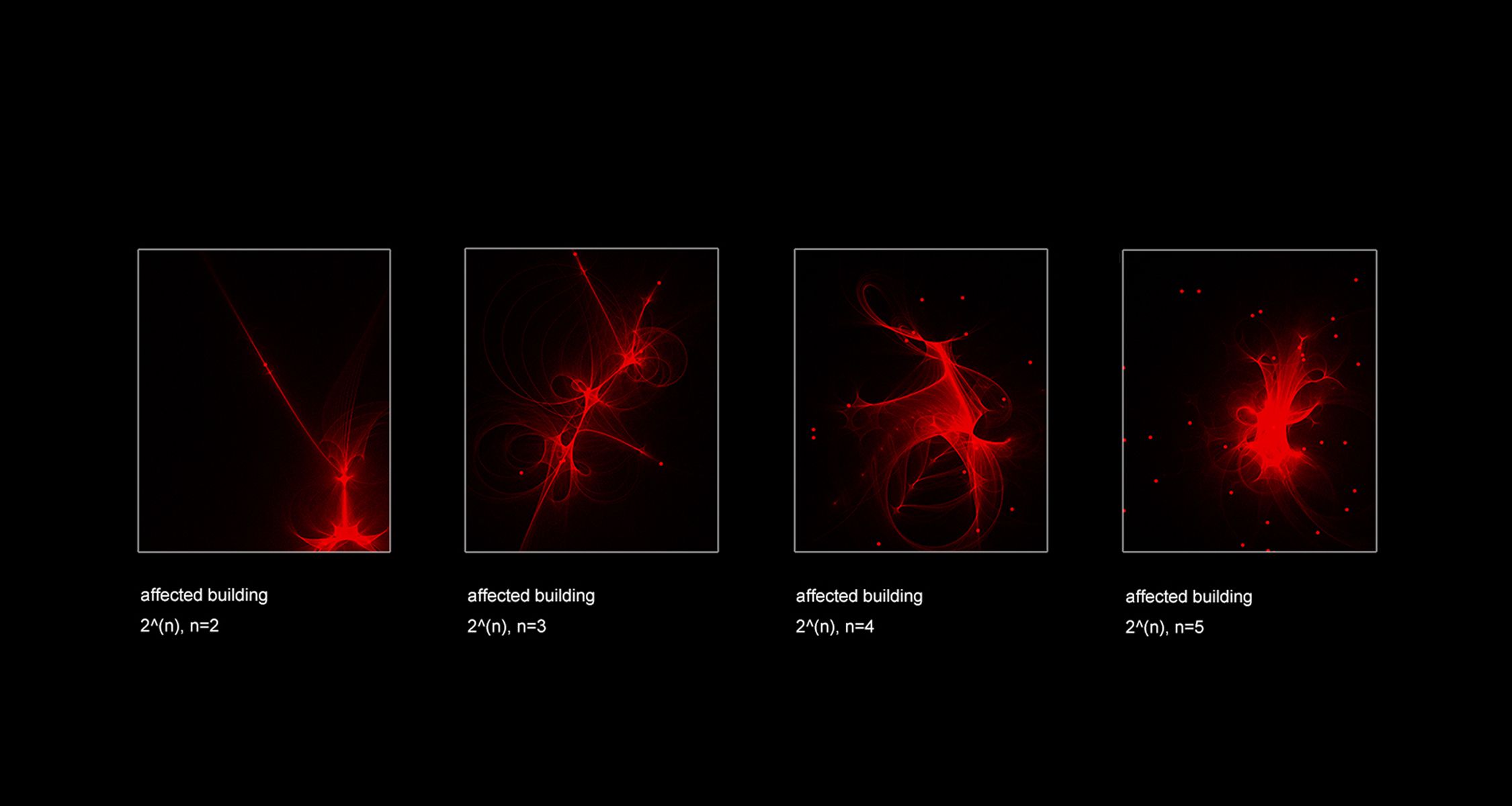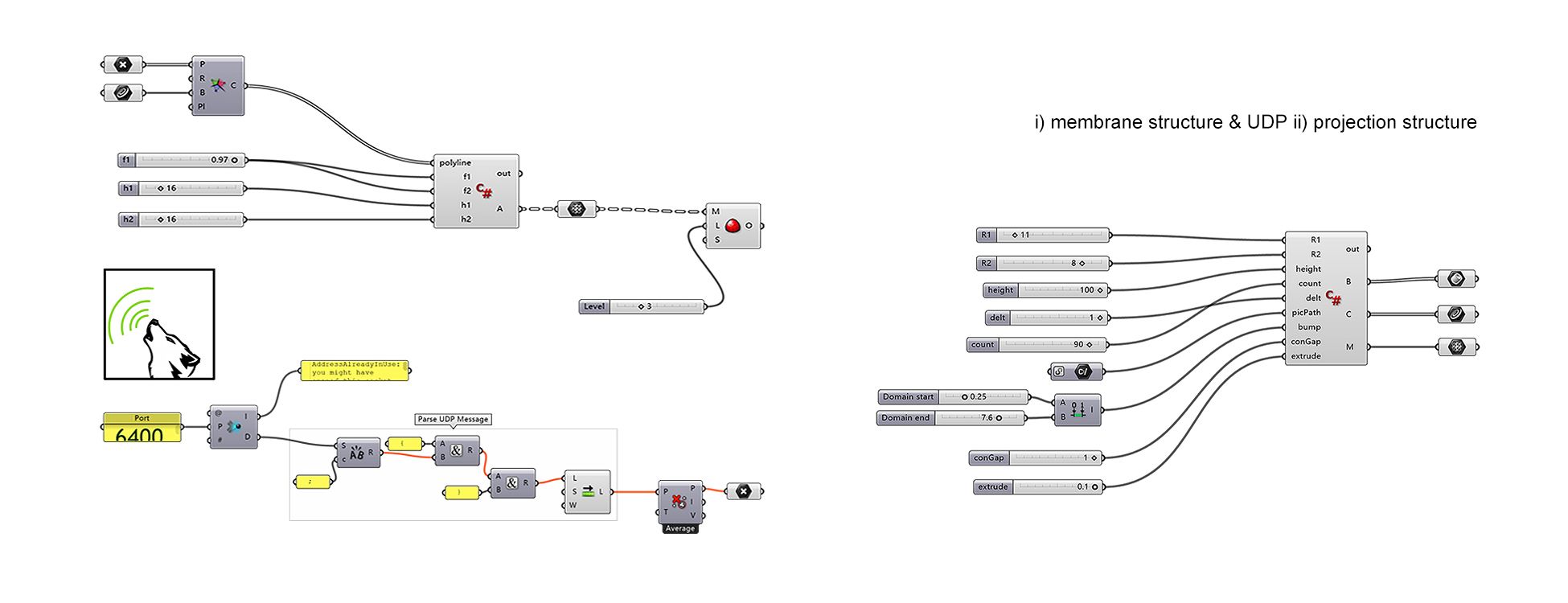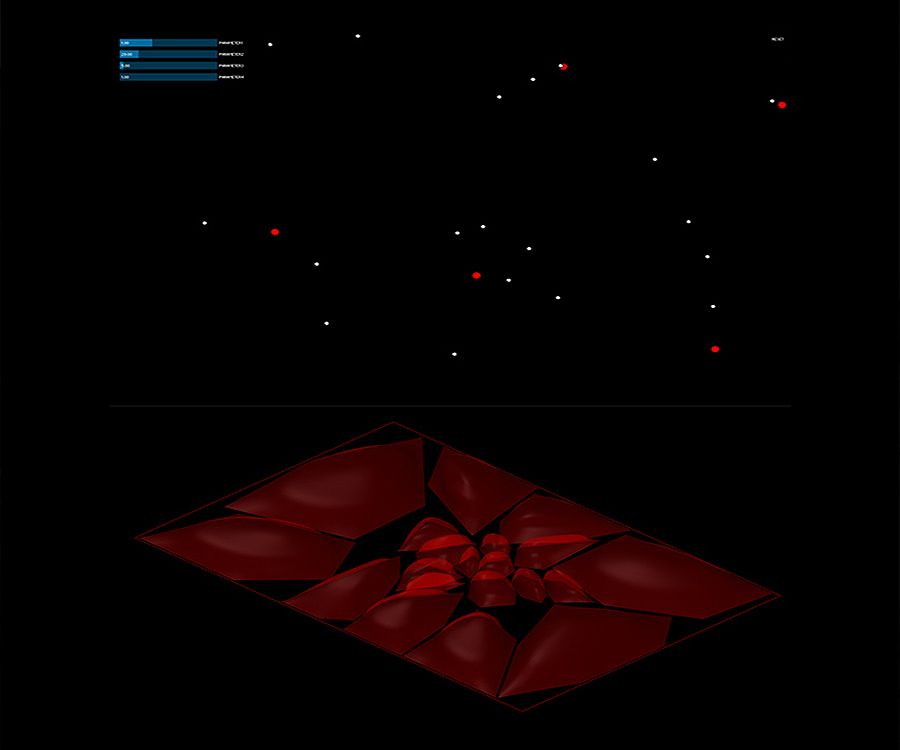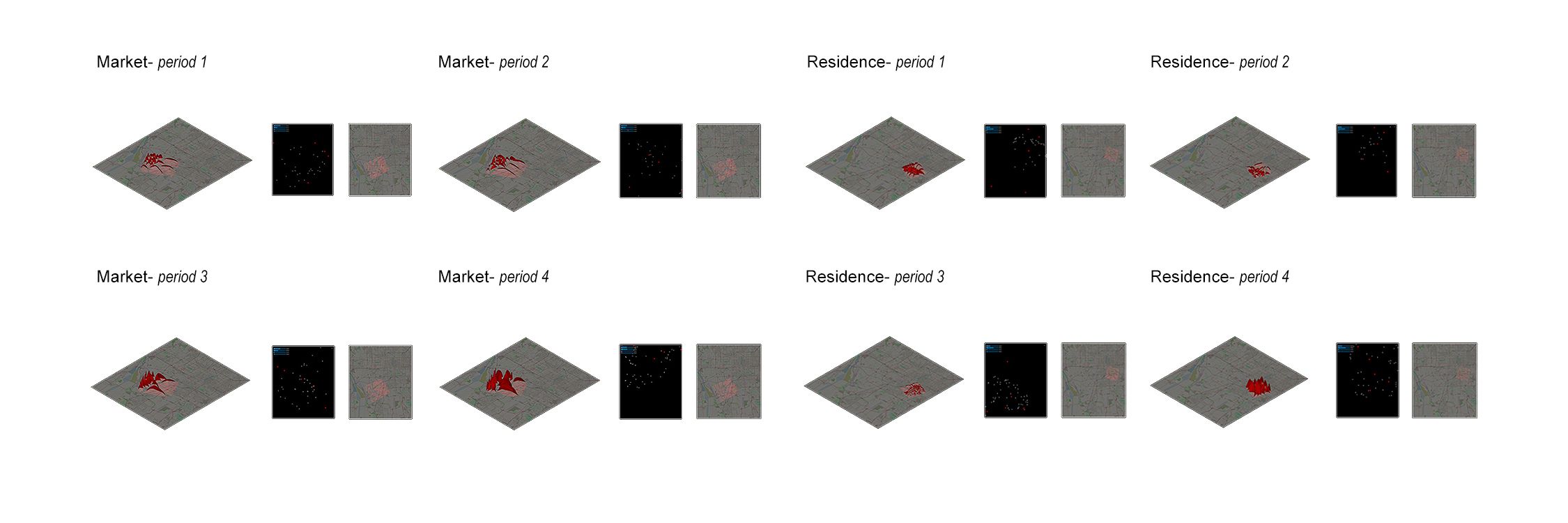COVID-19 Surveillant
A Transmission-based Spatial Simulation

We all suffer from COVID-19 throughout the world this year. It has deeply influenced our normal life, with social distancing, communicative fear, as well as disruption to the conventional urban space. Under this context, we would try to create a surveillance mechanism that manifests the underlying spatial transmission of the virus.
The project selects the central area of Beijing as the potential site, where the second wave of COVID-19 occurred in June, 2020. To detect the transmission rules, we employ machine learning methods (pix2pix GAN) to predict the risk level with spatial elements. Four parameters are defined including poi/land use, population density, breakout location and breakout distance. In the process of spatial simulation, we generate two prototypes: 1) membraned quarantine; and 2) projected warning. Both are interactively visualized by Processing and grasshopper C#. Also, market, residence, business and industry are the four functional areas to deploy the surveillant prototype. The spread network achieves a real-time response in the virtual world.



